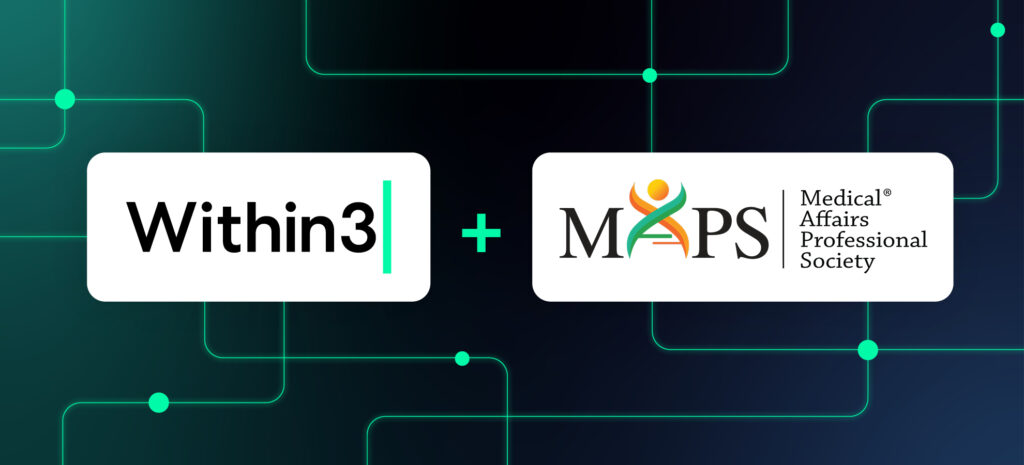White Paper
Identifying and addressing pain points in the insights management process

New industry-led white paper
The following is an excerpt from the latest Within3 and MAPS co-authored white paper featuring contributing authors from AstraZeneca, Eisai, Galderma, Kyowa Kirin, Philips, Roche, UCB, and other leading global companies. To access the complete white paper, visit the MAPS website. Membership may be required.
Introduction
Medical Affairs insights have the potential to drive the adaptation of company strategy to better match internal opportunities with external needs. However, Within3 and MAPS polling shows that only a minority of Medical Affairs departments that have implemented an insights management framework feel as if they are maximizing its benefits. Only 21% have a centralized insights database and only 9% report their insights management process is automated to the point that it is not overly cumbersome. Meanwhile 65% express concerns that a lack of insights could negatively impact product launches. In other words, challenges exist.
This white paper builds on a prior MAPS/Within3 paper, “The Value and Strategic Implementation of Insights Management” to address these challenges. To do so, MAPS and Within3 hosted a series of three roundtables with industry experts, both in-person and virtually, to explore aspects of insights management that remain “pain points” even in a mature insights management framework. These are grouped according to the three main components of insights management, namely Strategy, Data Generation and Analysis/ Reporting. The authors hope that by highlighting some of the specific challenges of the insights process, less mature Medical Affairs teams will be armed with the tools and opportunity to build strategies that preempt these challenges, while providing more mature teams insights to optimize their existing structures.
Strategy
As with so many aspects of Medical Affairs, a successful insights management process requires a strategy- first approach; one example is defining listening priorities based on company and Medical strategic imperatives prior to initiation of insights gathering. The idea that insights management requires strategy before implementation may seem obvious (and, indeed, is a central point of the previous MAPS/Within3 white paper on this subject), but the specifics of how to clearly articulate and effectively implement the insights strategy remain a major challenge area for Medical Affairs teams, including the following:
LISTENING PRIORITIES
Insights management may seem reactive in that it monitors the external scientific, clinical, healthcare, governmental, societal and patient landscapes for new knowledge/opinions/trends that allow an organization to react/respond accordingly. However, choosing what to listen for and designing the mechanics of data generation and analysis must be proactive to ensure it is strategically anchored. In fact, best-in-class insights management teams have a dual approach, first defining strategic listening priorities and secondly putting systems in place to answer the question, “Is there anything we’re missing?” This can be seen as listening both narrowly (for priorities) and broadly (for emergent learnings). Different people/processes/technologies may be more useful for these two different types of listening, for example using targeted strategies of Medical Science Liaison (MSL) engagements and advisory boards to monitor listening priorities, alongside a broader social listening strategy to identify unexpected landscape trends.
Want to read the rest of the discussion?
You can access the complete white paper on the MAPS ContentHub. (Membership may be required.)
MORE CONTENT AND RESOURCES:
- Get the first MAPS + Within3 white paper: “Value and strategic implementation of insights management.”
- Learn about technology that improves insights analysis and reporting
- Understand how assisted moderation could transform your next advisory board


